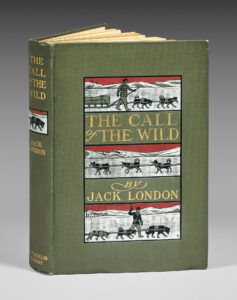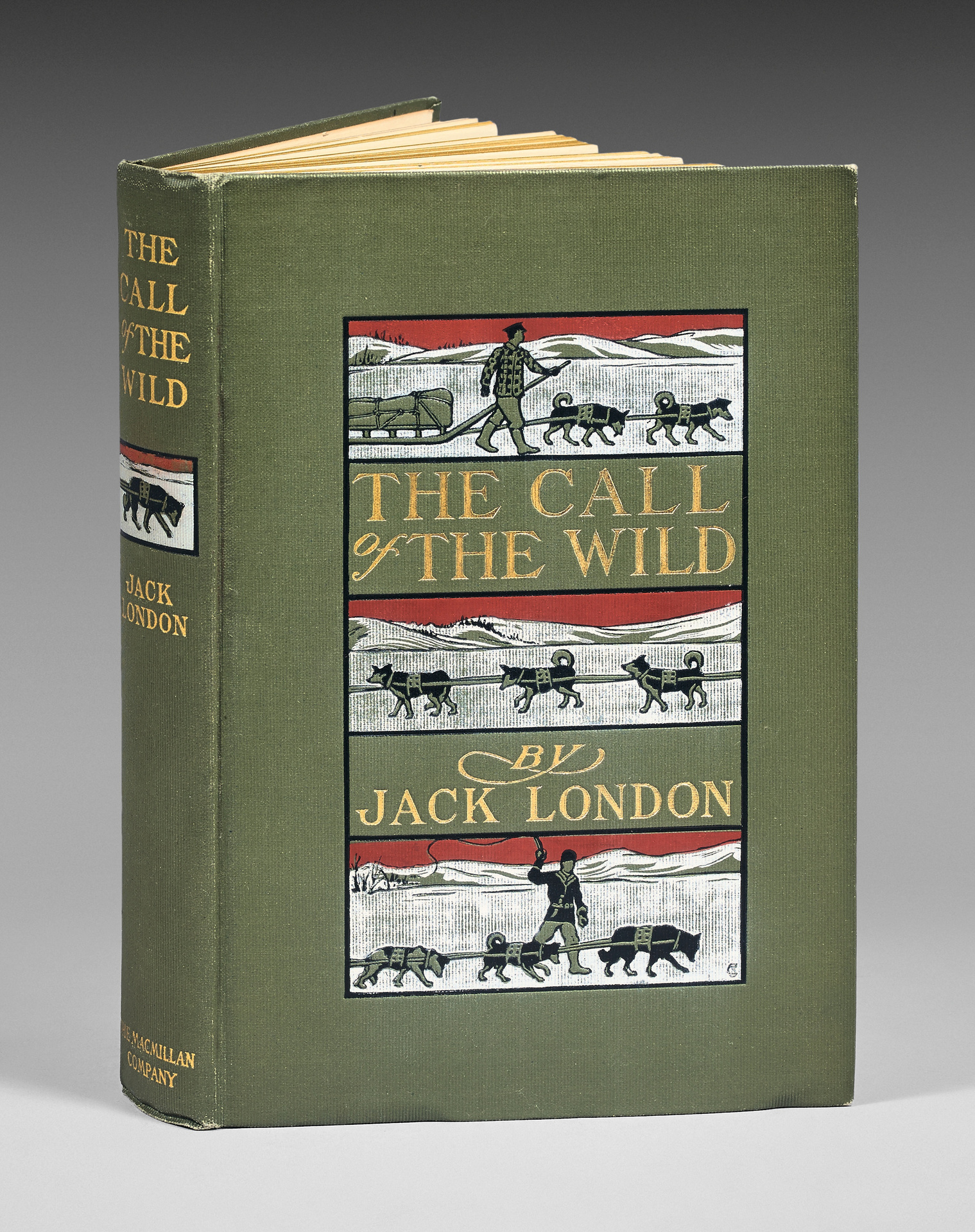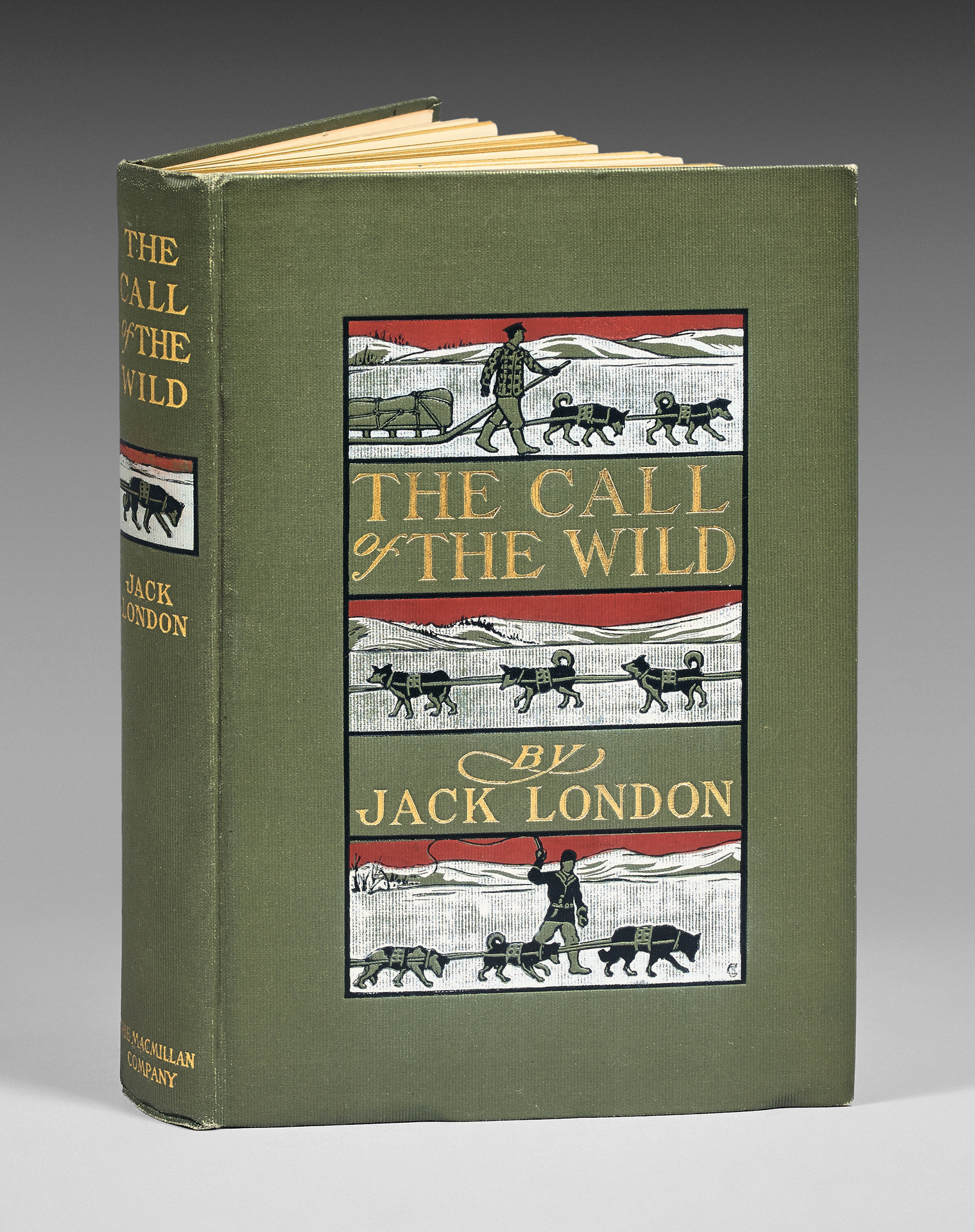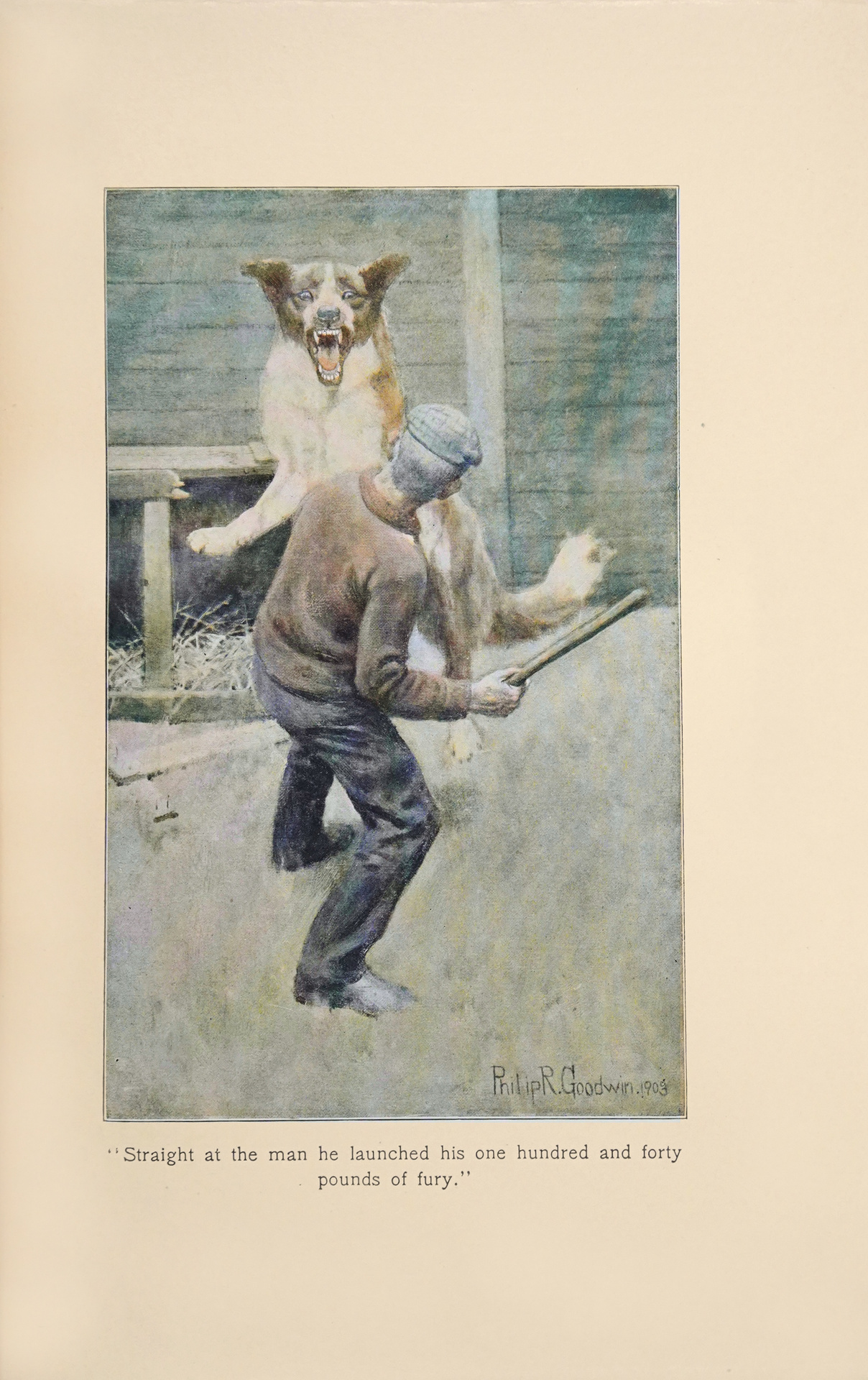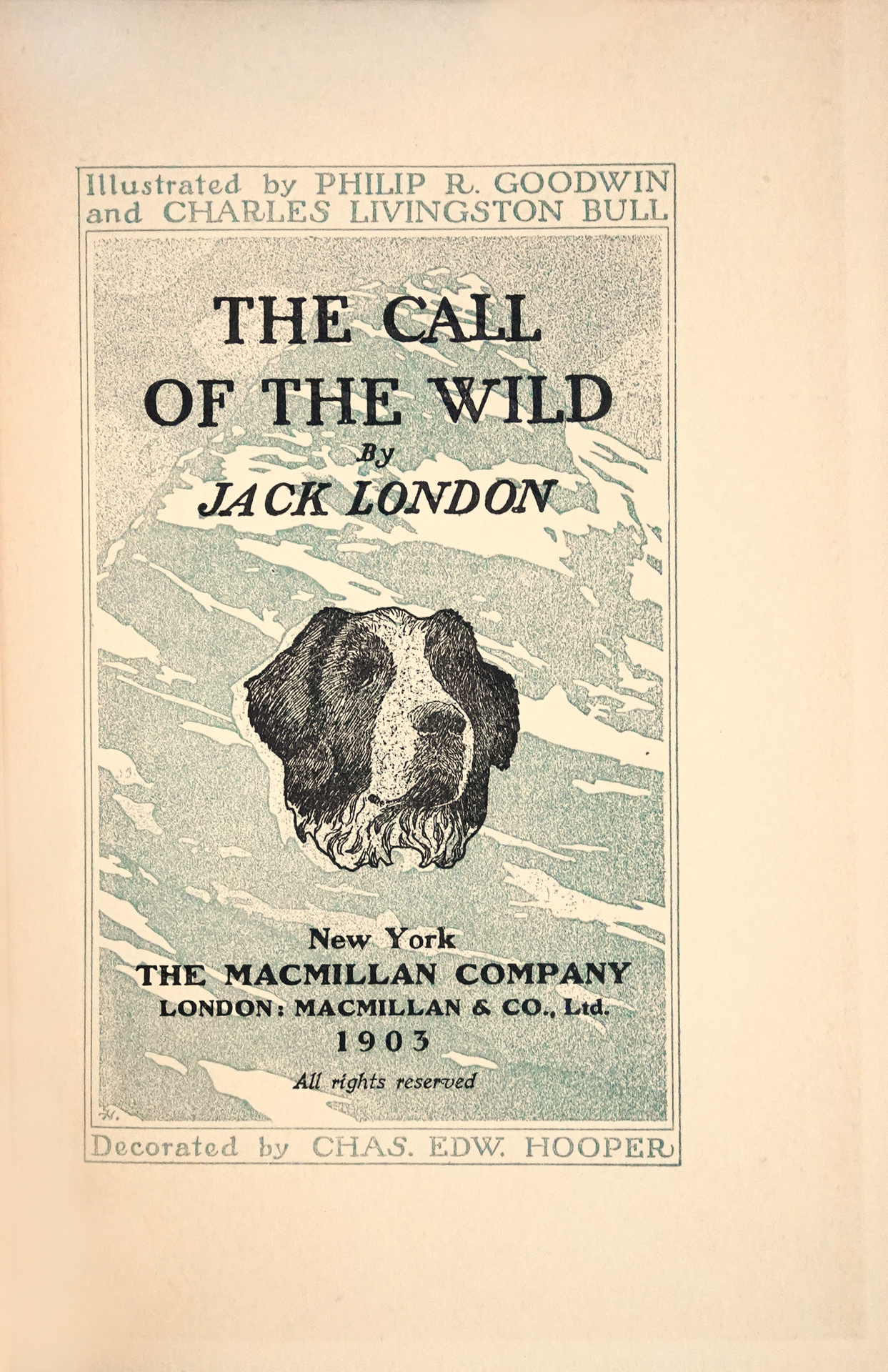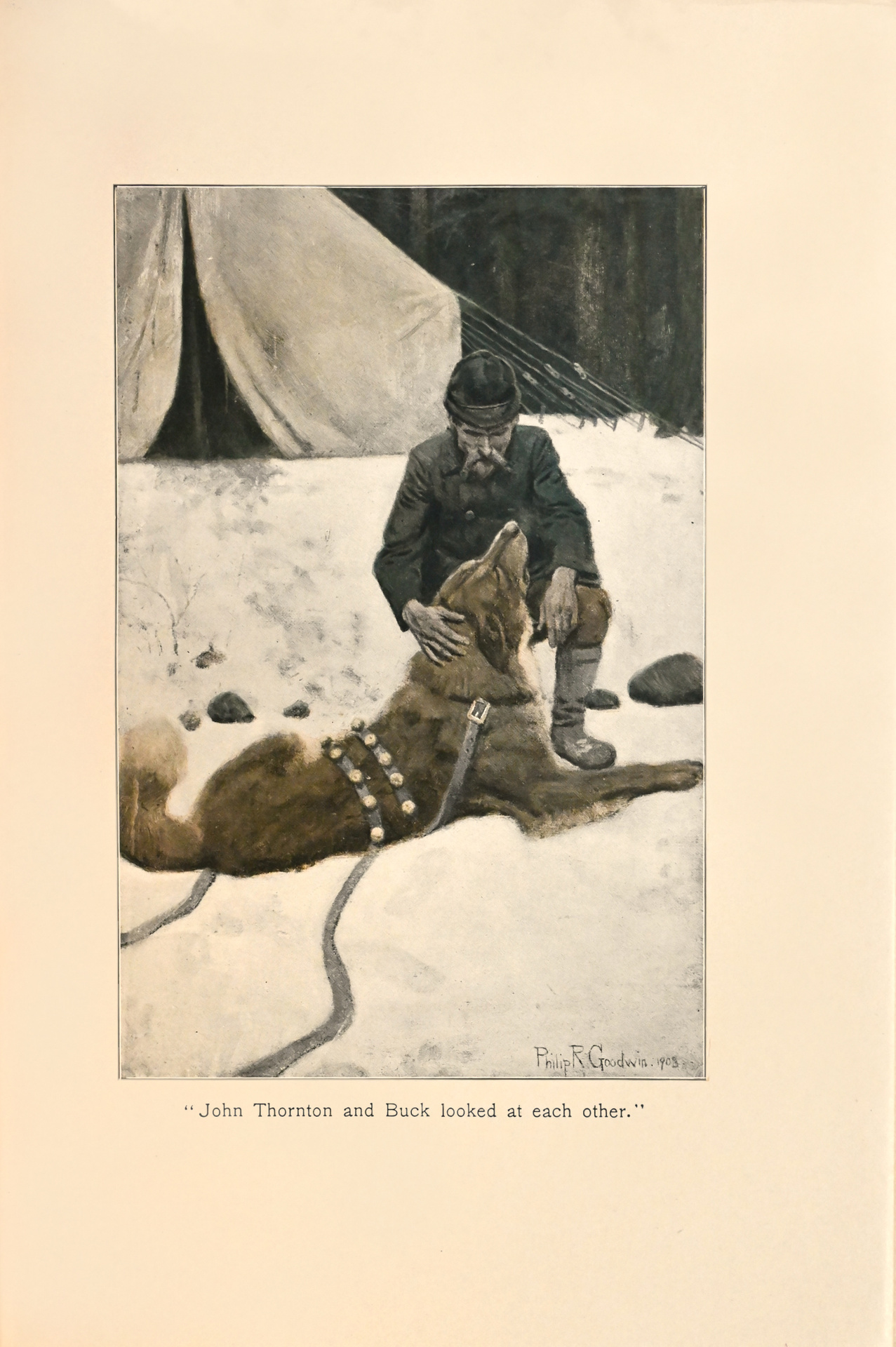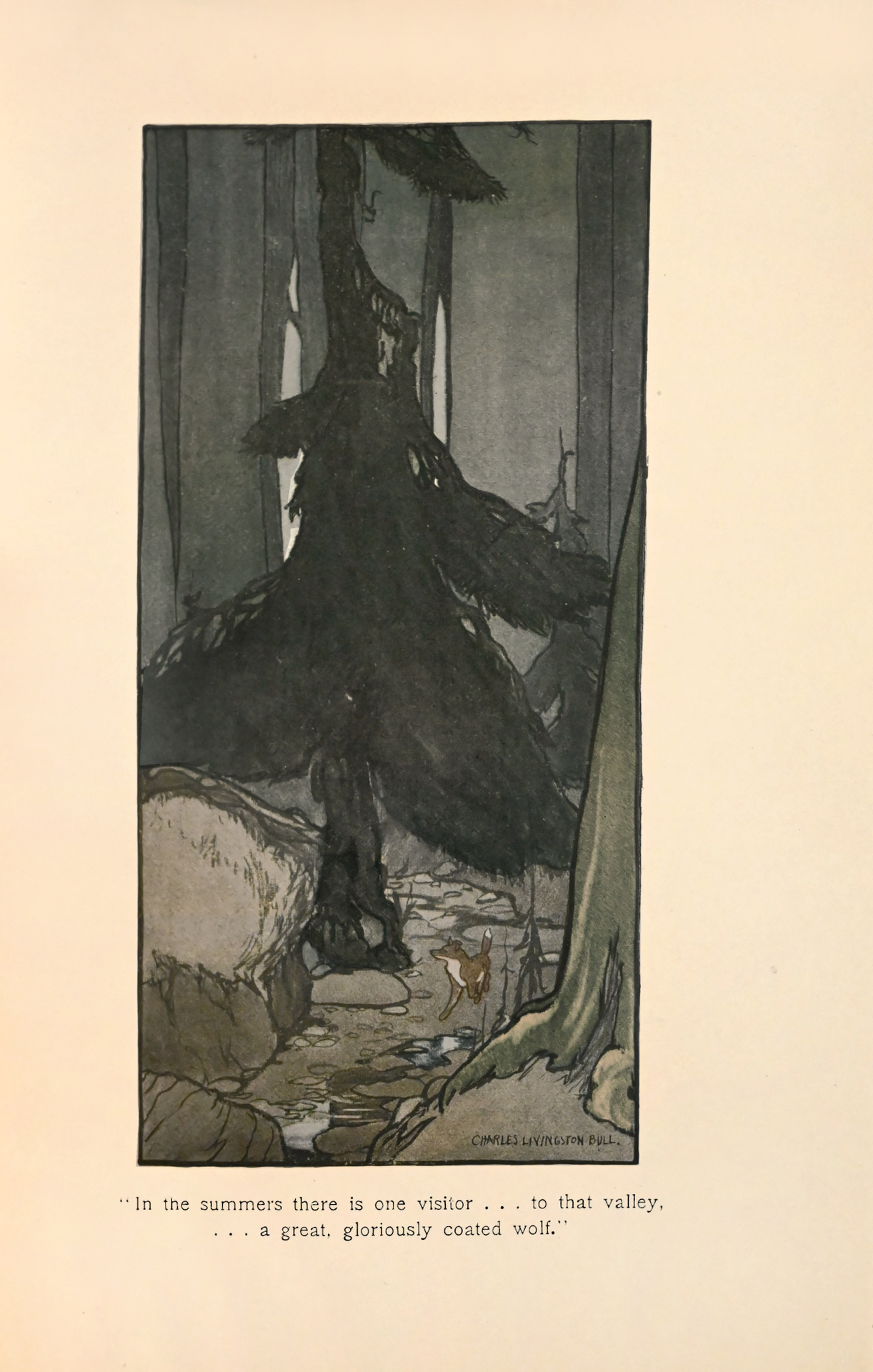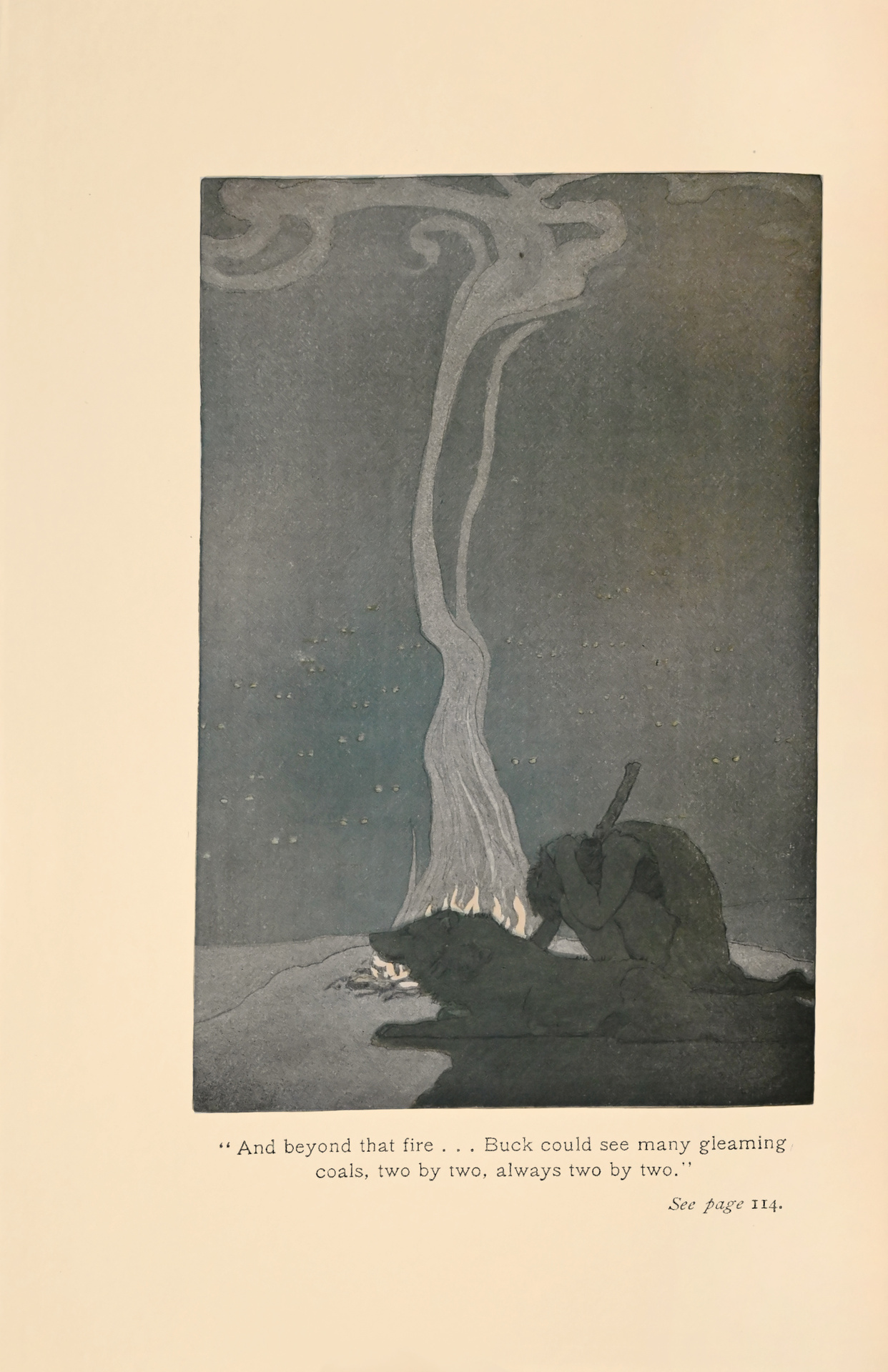New York, The Macmillan Company, 1903.
8vo [192 x 130 mm] of 231 pp. including (1) illustrated endpaper and 15 full-page engravings, (2) ll. of adverts. Original illustrated cloth. Slipcase.
First edition of this adventure novel by Jack London which action takes place during the gold rush era.
Jack London embarked in 1897 in order to take part in the Klondike’s gold rush. Suffering from scurvy, he was repatriated and began to write taking his inspiration from his experience in the Canadian Far North. He received recognition with The Son of The Wolf but success truly came with The Call of the Wild in 1903.
“A story by the North American writer Jack London (1876-1916) published in 1903. In the temperate South, the dog Buck, an interbreeding between a St. Bernard and a Scottish Shepherd, is the undisputed master of Judge Miller's home and farm. But in the autumn of 1894, when the discovery of the Klondike's gold deposits draws men from all over the world to the cold lands of Alaska, Buck is sold and sent north. There, deprived of strokes and consideration, in the midst of a hostile and savage country, he is forced to endure bêting, to bêr the harness and to pull the Canadian governor's mail sled; his muscles become as hard as iron, the primordial instinct of the old generations awakens in him, his bark becomes 'the inarticulate cry of the struggle for life' [...] During the long wanderings in which he accompanies Thornton in sêrch of an abandoned mine, Buck feels the Slavic instinct within him grow stronger and stronger, driving him towards the forest and the wolf, 'his wild brother'. His love for his master alone keeps him among men; and when Thornton dies, murdered by Indians, he joins his wild brothers and runs, alongside them, howling the song of the world's first days. The Call of the Wild' is the first of Jack London's books to revêl the author's belief in biological evolution and the omnipotence of the environment; but, although it illustrates a thesis, the novel is very much alive: alive is the dog Buck and alive are the other dogs, with their heroisms, ambitions and ferocities. It is not surprising that this book was a grêt success with Americans at the beginning of the century, for it brought to these industrialised and mechanised men the pungent and savage scent of instinct and life in the midst of nature.” (Dictionnaire des Œuvres, I, 219).
This first edition is illustrated with 15 full-page engravings by Philip R. Goodwin and Charles Livingston Bull.
Very bêutiful copy preserved as published in the editor’s illustrated cloth.
